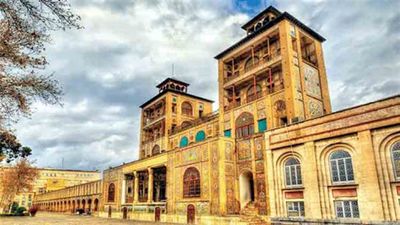Afarin Emami added that giving service to scholars and researchers is one of the museum’s priorities, explaining that these manuscripts are getting digitalized to become better accessible for them.
Emami stated that in the first stage, 31 exquisite manuscripts (each with 1,200 pages) including Nassereddin Shah Manuscript, Aladdin Tabrizi’s Manuscript, Ibrahim Golestaneh Manuscript, and broken nasta’liq were selected and they were photographed with high quality, he added.
Currently, 12 Qajar nail-etching manuscripts have been photographed, and due to the fact that they are colorless, it is difficult to photograph them; they need to be snapped obliquely and directly in two stages, Emami said.
Following extensions and additions, the palace museum received its most characteristic features in the 19th century, when the palace complex was selected as the royal residence and seat of power by the Qajar ruling family (1789-1925). At present, the Golestan Palace complex consists of eight key palace structures mostly used as museums and the eponymous gardens, surrounded by an outer wall with gates.
UNESCO has it that the complex exemplifies architectural and artistic achievements of the Qajar era including the introduction of European motifs and styles in Persian arts.
Source: Iran Daily

